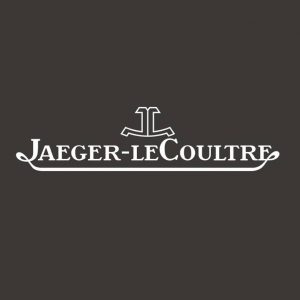Contents
Summary
A major player in watchmaking history since 1833 Jaeger-LeCoultre is the first manufacture to have been established in the Vallée de Joux- Switzerland. The luxury brand played a pioneering role by uniting the full range of technical and artistic professions under one roof and made an indelible imprint on watchmaking development by developing legendary watches such as Reverso, Duoplan, Master Control, Geophysic, Memovox Polaris, Gyrotourbillon and the Atmos clock.
Guided by time-honored know-how and a constant quest for technical enhancements, the master-watchmakers, engineers and technicians craft each watch in harmony with the same passion. Each masterpiece, heir to more than 180 years of expertise, benefits from cutting-edge technologies while being crafted in harmony with the noblest traditions of the Vallée de Joux. Building on a vast heritage encompassing 1,242 calibres and 398 registered patents, Jaeger-LeCoultre remains the reference in high-end watchmaking.
History
In the sixteenth century French Huguenot Pierre LeCoultre fled to Geneva to escape religious persecution. Although he obtained the status of inhabitant he left to acquire a plot of land in Vallée de Joux. Over time, a small community formed and in 1612, Pierre LeCoultre’s son Antoine built a church there, marking the founding of the village of Le Sentier where the company’s manufacture is still based today.
Antoine LeCoultre founded a modest watchmaking workshop in 1883 and made horological history when he invented the world’s most precise measuring instrument at the time, the millionomètre. The invention was never patented, however, its unique composition was kept a secret, used by the company for over fifty years. In 1847 he developed a keyless system to rewind and set watches.
Four years later Antoine LeCoultre was awarded a gold medal for his work on timepiece precision and mechanisation at Universal Exhibition in London. Following his trip, his son Elie LeCoultre joined the family business at sixteen and developed complications that transformed the workshop into Switzerland’s most prolific manufacturers, LeCoultre and Cie. Here they developed the first partially mechanised production processes for complicated movements, in 1870.
Paris-based watchmaker to the French Navy, Edmond Jaeger, who created complications that measured speed, challenged Swiss manufacturers to develop ultra-thin movements he had invented, in 1903. Jacques-David LeCoultre, grandson of Antoine LeCoultre, took up the challenge and developed ultra-thin pocket watches, including the thinnest in the world in 1907, equipped with the LeCoultre Calibre 145. The same year, French jeweller Cartier, one of Jaeger’s clients, signed a contract with the Parisian watchmaker under which all Jaeger movements would be exclusive to Cartier for fifteen years.
In 1935 Edmond Jaeger acquired the patent for the atmospherically driven clock Atmos from its inventor Jean-Léon Reutter and licensed it to LeCoultre, intent on developing a modern version. Atmos relies on temperature and atmospheric pressure changes for a constant winding of the clock mainspring. This was an engineering feat for its time and was announced to the public on January 15th, 1936, a year before Jaeger collaborated with LeCoultre, and renamed Jaeger-LeCoultre.
Till date Jaeger-LeCoultre has produced over 1,242 calibres and registered approximately four hundred patents. Some of its icons include the precise, robust and shock- resistant Geophysic chronometer created in 1958; an alarm diving watch equipped with a patented triple case-back system to optimise the diffusion of sound under water, in 1968; Duomètre collection designed around the dual-wing concept, one to ensure precision and another for the complication, both synchronised by a single regulating part, in 2007; Master Grande Tradition Gyrotourbillon 3 Jubilee with the chronograph featuring an instant digital counter, in 2013; Jaeger LeCoultre Polaris associating its watchmaking know-how with a modern sporting elegance, in 2018; Master Grande Tradition Gyrotourbillon Westminster Perpétuel, further advancing the art of multi-axis tourbillons in 2019.
Swiss watchmaker Jaeger-LeCoultre celebrated its 180th anniversary by commissioning Carmen Chaplin – granddaughter of the acclaimed actor – to direct a short film based on the subject of time and inheritance. Per Vogue: “The piece, which features three generations of the Chaplin family – Carmen Chaplin, Patricia Chaplin and Uma Chaplin Bhalla – celebrates the memory of their famous relative, who was himself a fan of the brand.”
Mission Statement
Jaeger Lecoultre brings together artisans, watchmakers, engineers, technicians, artists and mechanics under one roof in its quest to create timepieces that represent a concentrated blend of expertise and a powerful cultural symbol throughout generations. By partnering with schools and universities and by supporting apprenticeship programs, the Maison contributes to raising the generation of tomorrow. Since 1933 young generations of watchmakers have been trained at the Manufacture. In 1992 and again in 2021, extensions to the training center have allowed them to develop training programs in watchmaking and new internal programmes. It is their young talents who will take over and ensure the transmission of their heritage and knowledge.
Vision
To be a guardian of unique expertise and heritage in watchmaking. From the rarest craft to the most cutting-edge technologies – Jaeger Lecoultre envisions creating luxury timepieces that are the epitome of classic elegance and timeless style. Master-watchmakers, engineers and technicians craft each watch in harmony, guided by time-honoured know-how and a constant quest for technical enhancements together with passion and vision for innovation.
Diversity, Equity and Inclusion are the core values of Jaeger-LeCoultre. The company aims to continue building a positive multicultural environment where they encourage, support and celebrate the different voices of their employees to feel respected, empowered and authentic at all levels. At Jaeger-LeCoultre, the core team is committed to creating a positive culture that provides equal opportunity and fair treatment for all.
Key Team
Catherine Rénier (CEO)
Matthieu Le Voyer (Chief Marketing Officer)
Philippe Hermann (CFO)
Antoine LeCoultre (Founder)
Products and Services
Watches and clocks
Environmental rating
In December 2018, World Wide Fund for Nature released an official report giving environmental ratings for 15 major watch manufacturers and jewellers in Switzerland. Jaeger-LeCoultre, along with three other manufacturers including Vacheron Constantin and Cartier, was given an average environmental rating as “Upper Midfield”, suggesting that the manufacturer has taken first actions addressing the impact of its manufacturing activities on the environment and climate change.
References
- Official website Jaeger Lecoultre
- Jaeger-LeCoultre Appoints Catherine Rénier New CEO JCK
- Jaeger-LeCoultre Celebrates 180 Years Vogue
- Leonardo DiCaprio and Jaeger LeCoultre EuropeStar
- LinkedIn page of Jaeger LeCoultre LinkedIn
- Charlie Chaplin’s Jaeger LeCoultre Forbes
- This Is the Watch Don Draper Bought GQ
- Jaeger LeCoultre’s Calibre 101 A Blog to Watch
- Facebook page of Jaeger LeCoultre Facebook
- The maker of Pablo Picasso’s most valuable watches GQ
- Jaeger-LeCoultre’s Reverso Was Almost a Century Ahead of Trends GQ
- 5 reasons to own Jaeger LeCoultre Bucherer
- Twitter page of Jaeger LeCoultre Twitter
- History of the Jaeger-LeCoultre Reverso Time And Watches
- Instagram page of Jaeger LeCoultre Instagram
- Top Watches For Social Peacocking Forbes
- Youtube channel of Jaeger LeCoultre Youtube
- Jaeger-LeCoultre Reverso Classic Large Duoface Small Second Watch Collecting Lifestyle
- Wikipedia page of Jaeger LeCoultre Wikipedia





